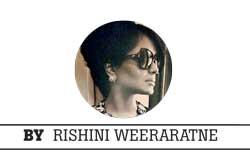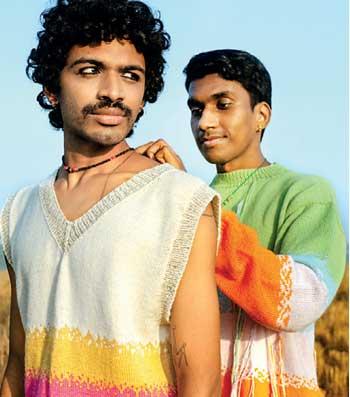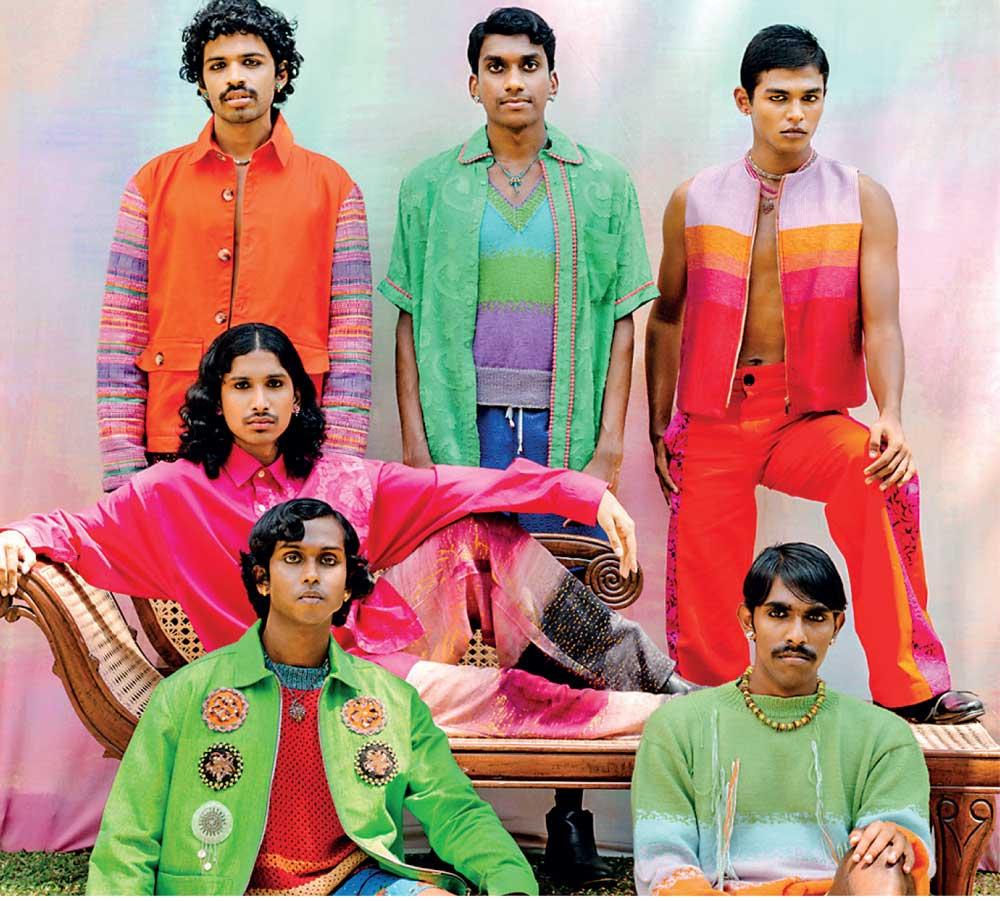Reply To:
Name - Reply Comment
 Amesh Wijesekera stands as a true embodiment of a Sri Lankan international icon, seamlessly blending local heritage with global innovation. Renowned for his avant-garde designs, Amesh has made significant strides in the fashion industry, inspiring a new generation of creatives in Sri Lanka. His journey from a budding designer to a celebrated figure on international runways is a testament to his talent, perseverance, and deep-rooted connection to his cultural identity. The Academy of Design (AOD) has played a pivotal role in shaping his career, providing him with a solid foundation in fashion and textile design. This prestigious institution has not only nurtured his artistic vision but has also connected him with a network of industry leaders and opportunities that propelled him onto the global stage. Amesh's work reflects the rich tapestry of Sri Lankan culture, serving as a reminder of the immense potential within the island. As he continues to push boundaries and redefine fashion, he remains a beacon of inspiration for young Sri Lankans, encouraging them to embrace their roots while daring to dream big. Through his endeavours, Amesh Wijesekera not only showcases the brilliance of Sri Lankan talent but also fosters a sense of pride and ambition among aspiring designers.
Amesh Wijesekera stands as a true embodiment of a Sri Lankan international icon, seamlessly blending local heritage with global innovation. Renowned for his avant-garde designs, Amesh has made significant strides in the fashion industry, inspiring a new generation of creatives in Sri Lanka. His journey from a budding designer to a celebrated figure on international runways is a testament to his talent, perseverance, and deep-rooted connection to his cultural identity. The Academy of Design (AOD) has played a pivotal role in shaping his career, providing him with a solid foundation in fashion and textile design. This prestigious institution has not only nurtured his artistic vision but has also connected him with a network of industry leaders and opportunities that propelled him onto the global stage. Amesh's work reflects the rich tapestry of Sri Lankan culture, serving as a reminder of the immense potential within the island. As he continues to push boundaries and redefine fashion, he remains a beacon of inspiration for young Sri Lankans, encouraging them to embrace their roots while daring to dream big. Through his endeavours, Amesh Wijesekera not only showcases the brilliance of Sri Lankan talent but also fosters a sense of pride and ambition among aspiring designers.
 Can you tell us about your journey into fashion? What inspired you to become a designer?
Can you tell us about your journey into fashion? What inspired you to become a designer?
I’ve always been that creative, slightly messy kid growing up. My mom’s side of the family was filled with inspiring individuals; architects, interior designers, horticulturists, and florists, so I was constantly surrounded by creativity. DIY projects were encouraged, and I naturally gravitated toward anything crafty. During my school years, I immersed myself in theatre, ballet, and art, which fuelled my love for creating with limited resources. That’s when I knew I wanted to pursue design. Fashion became my chosen outlet, a way to express myself and build my own unique world.
How does your Sri Lankan heritage influence your designs and creative process?
My creative process is deeply influenced by the stories, people, experiences, and communities around me. Childhood nostalgia, the distinct smells and sounds of Sri Lanka, evoke memories that inspire new narratives for the future. Our rich, diverse cultures and vibrant landscapes continuously make me reflect, question, and explore. Being directly connected to our heritage craft communities has always been a source of inspiration, and their artistry will continue to shape and influence my creative practice.
Your collections are known for their unique use of textiles. How do you source and select your fabrics?
At AMESH, the brand centres on integrating traditional Sri Lankan artisanal techniques such as hand weaving, knitting, and crochet, creating unique, handcrafted textiles. Collaborating closely with local craft communities, AMESH combines heritage craftsmanship with contemporary design to produce one-of-a-kind fabrics. Each piece is handmade, celebrating the artistry and imperfections that give it a distinctive character.
Sustainability is at the core of AMESH’s approach, with a focus on resourcefulness. All collections are designed and made in Sri Lanka using ethically sourced natural fibres and upcycled materials, including dead stock and factory off-cuts. The brand embraces upcycling and eco-friendly technologies to minimize waste and promote a circular design model. Additionally, the limited availability of raw materials encourages creativity, resulting in exclusive pieces that reflect a commitment to slow fashion. For AMESH, sustainability is not just a choice, but the foundation of the brand’s ethos from the beginning.
Can you walk us through the creative process behind one of your recent collections?
My creative process often works in reverse; I design based on what materials I can find. Whether it’s studio waste or materials sourced from street markets, the yarns, trims, and fabrics often inspire the initial idea. From there, we enter a stage of experimentation, collaborating closely with artisans to manipulate fabrics and create new surfaces and textures, which help us develop unique textiles. Once we’ve explored these possibilities, we begin crafting a narrative or purpose for the collection, pulling all the ideas together. The final stage involves editing and applying these developments to three-dimensional forms. The most exciting part is that the outcome is often unknown, when things go wrong, they often lead to unexpected ideas that inspire future collections.
 Who or what are your biggest inspirations, both within and outside the fashion world?
Who or what are your biggest inspirations, both within and outside the fashion world?
I’ve always been intrigued by youth culture, gender expression, and the fluidity of sexuality. The contrasts between elements, rough and smooth, tactility, fluidity, masculinity, and femininity, play a significant role in my creative process. Living between Europe and Sri Lanka also influences how I perceive and respond to different environments. Outside of fashion, art, photography, and the natural world are constant sources of inspiration, shaping the way I approach design and creativity.
How do you balance artistry with the commercial side of fashion?
It’s about finding a balance between creating something exciting and desirable while ensuring it remains relatable, beautiful, and practical. It’s a continuous learning process, and with time, I’ve gained a better understanding of how to merge artistic vision with commercial appeal. I’m still learning as I go, but maintaining that balance is key.
You’ve been involved with the Academy of Design in Sri Lanka for a while. How has this institution shaped the country’s design landscape, and what role do you play in mentoring emerging talent?
I completed my BA in Fashion and Textile Design at AOD in 2015 and moved to London shortly after, but the AOD family has always supported me in connecting globally. AOD has produced industry leaders across various design fields and set the benchmark for nurturing young talent, helping to create international stars with a distinct Sri Lankan narrative.
As an alumnus, I frequently return to Sri Lanka to share my experiences and knowledge with students through workshops and presentations. This year has been particularly special, as I was invited to be one of the creative directors for Mercedes-Benz Fashion Week 2024. It’s been incredibly exciting to mentor and collaborate with emerging talent, both locally and regionally, and to see their ideas come to life.
The Sri Lanka Design Festival 2024 is set to be a major platform for showcasing innovation and culture. Can you share your experience with this year’s festival and what you’re looking forward to the most?
I’ve watched the Sri Lanka Design Festival evolve since my days as a student, and this year feels particularly special as SLDF celebrates its 15th anniversary, marking a milestone in shaping the future of design innovation both in Sri Lanka and the region. I’m thrilled to be part of the workshops and panel discussions, and I’m looking forward to reconnecting with key industry leaders and international delegates who have supported this platform. It’s an incredible space to exchange ideas, find inspiration, and make an impact on the design landscape.

As a designer, how has participating in Mercedes Benz Fashion Week 2024 influenced your approach to international fashion? What impact do you think it has on bringing Sri Lankan fashion to the global stage?
This year is particularly significant, with multiple international designers sharing the runway, which challenges us to elevate and innovate our craft. The expanding audience of local and international industry leaders makes this an impactful platform to showcase what the region has to offer. It provides Sri Lankan designers with the opportunity to share our stories and reach new markets, effectively putting Sri Lankan fashion on the global stage.
Many of your designs have a bold, avant-garde aesthetic. How do you stay true to your creative vision while appealing to a global audience?
Staying true to yourself is key. It’s essential to have a strong aesthetic and brand DNA that reflects your unique identity. I believe in being confident, continually pushing my boundaries, and doing what feels right. There’s always an audience for a fresh perspective, and this has been my strength in navigating the global fashion landscape.
Can you share some challenges you’ve faced as a designer from Sri Lanka, breaking in to the international fashion scene?
One of the main challenges is the lack of support and recognition from our arts and crafts ministries, which limits our funding and scope to penetrate international markets. Understanding the business side of fashion is crucial, but we haven’t fully capitalized on our potential for high-value local exports. This opportunity remains largely unrealized, making it difficult for designers like me to break into the global fashion scene.
How do you see the future of fashion in Sri Lanka? What role do you hope to play in shaping it?
I’m optimistic about the future; it looks promising as our country heals and progresses. Entrepreneurship is thriving, leading to exciting new opportunities and markets. Through AMESH, I aim to showcase our Sri Lankan narrative, strengthen our products globally, and foster a movement centred around local talent. My goal is to inspire young creatives to push boundaries and embrace innovation in their work!
What was it like showcasing your work at an international fashion week? How did this experience impact your career?
My journey began with MBFW platforms in Colombo, Berlin, and Tbilisi, leading to my debut at London Fashion Week through the International Fashion Showcase. I became the first Sri Lankan designer nominated for the prestigious LVMH Prize in Paris, and last year, I was a finalist in the Circular Design Challenge during Lakme Fashion Week in India. These experiences allowed me to participate in various mentorship programs, connect with the global fashion community, and engage with international buyers and press, helping me build a global clientele. This journey has not only helped me grow personally but also strengthened my brand and pushed me to compete on an international level.
Collaboration seems to be a significant part of the fashion industry. Are there any collaborations that have particularly shaped your work?
Collaborations are essential for innovation, creating new ideas, and pushing boundaries. I’ve been fortunate to work with incredible talents both locally and internationally, particularly in the arts and music scene. These partnerships have significantly influenced the direction of AMESH and contributed to its growth.